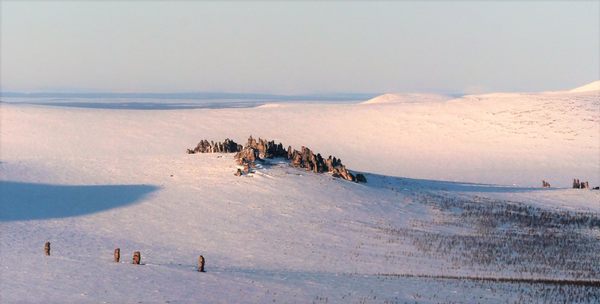The Republic of Sakha (Yakutia) is the largest primary administrative division in the world, yet it is also among Russia’s least densely populated and most remote regions.
This region is home to the coldest inhabited place on Earth, and it should come as no surprise that Yakutia also has unique natural features found almost nowhere else. For instance, the Ulakhan-Sis Range is one of the few places with geological formations known as kigilyakhs and baydzharakhs.
Kigilyakhs are granite or sandstone pillars formed when the North American and Eurasian plates collided between 66 and 144 million years ago during the Cretaceous Period.
Kigilyakhs are found mainly around the East Siberian Lowland in northeastern Yakutia, and the Ulakhan-Sis Range is home to thousands over 23 square miles (60 square kilometers), some measuring over 124 feet tall (38 meters).
Weathering in this remote region eroded ridges into today’s tall, narrow formations. With an almost human-made appearance, some claim the kigilyakhs are remnants of a lost civilization. The formations have been nicknamed “granite cities,” but their proper name means “mountain having a man” in the local language, Yakut. The Yakut people believed the pillars were the remnants of ancient people frozen to death during a cold snap. As such, they held great religious significance.
Conical formations made of softer, silty rocks or soil, known as the Baydzharakhs, are also found here. These geological oddities are created when wedges of ice thaw within the permafrost, leaving circular depressions called alases between pointed hills.
Being in such a remote region and off the main river routes, the Ulakhan-Sis Range was not explored until 1870 by Gerhard von Maydell on behalf of the Russian Academy of Sciences. However, the kigilyakhs there were not largely recognized by outsiders until the 2010s, when photographer Sergey Karpushin noticed them in aerial photos of reindeer herds. Karpushin visited the site in 2016 for further documentation.
Although the occasional tour now runs to the range, the location is still extremely off the beaten path and requires several days of trekking.



